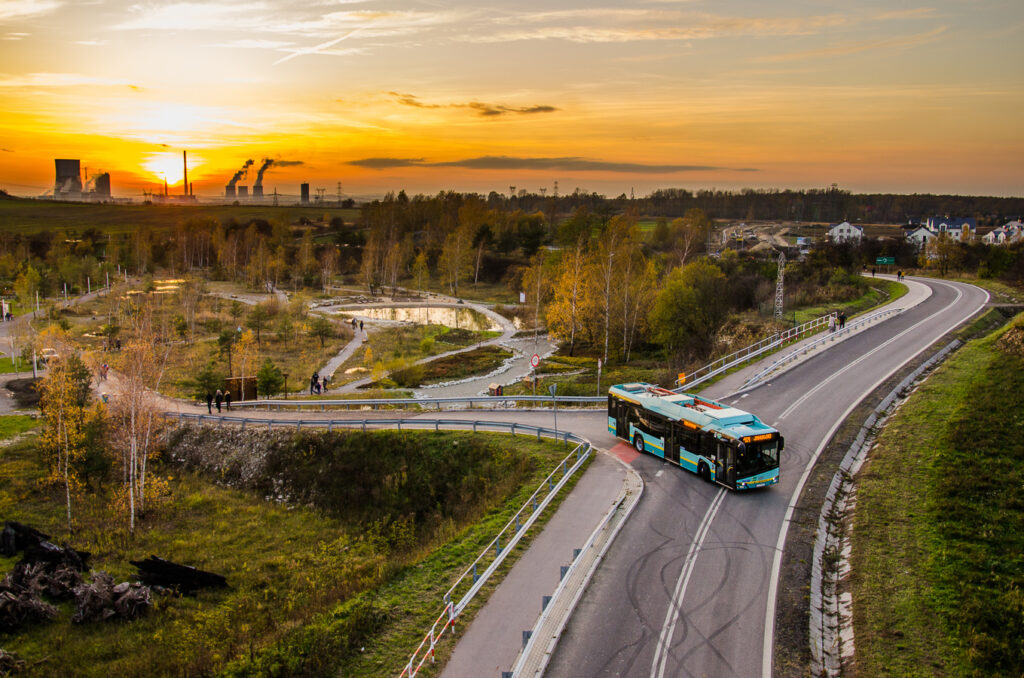Bus Rapid Transit in Denmark: Aalborg
BRT in Aalborg: the city's solution for enhancing urban transport – what makes it so effective?

Small towns e-mobility. What can we learn from Jaworzno, Poland?
CASE STUDY
According to the city authorities, the future of public transportation in Jaworzno is electric only. Below, we present how a city of up to 100,000 inhabitants can be an example for the whole Europe, and how e-mobility transition is not only for large metropolises.
Jaworzno is a pioneer in implementing small towns e-mobility. This is the first city in Poland where an electric bus was launched (2015!). Today, including the latest orders from the operator, 80% of all buses in Jaworzno will be electric.
“Zero-emission vehicles seem to be a natural evolutionary stage in transport. After all, the world is constantly looking for solutions that are as least harmful to the environment as possible. And it is this search that fits well with the global shift towards e-mobility.”
Zbigniew Nosal, President of PKM Jaworzno
Promising performance of e-buses, a positive experience from their operation or passengers satisfaction are the official arguments confirming the carrier’s belief that the turn to e-mobility is a good direction. In total, the entire fleet of Jaworzno currently includes 74 buses, 60% of them are electric. The latter serve over 80% of all routes, not only in the city itself, but also in the neighboring municipalities – which means that they move efficiently both in urban and intercity conditions.
By the end of February 2021, Solaris completed the contract under which the City of Jaworzno decided to purchase 5 Urbino 8.9 LE electric buses and 15 Urbino 12 electric buses.
The company recently announced a tender for 6 new articulated electric vahicles. As a result, the carrier belonging to the Jaworzno local government will have 50 electric buses in 2022, of which approx. 74 are owned.
All vehicles ordered by the customer will be equipped with Solaris High Energy batteries with a capacity of 160 kWh. PKM Jaworzno charges the batteries with 190 kW pantograph chargers and a plug-in connector. The heart of the drive system in each of the vehicles – both the shorter 9-meter Urbino and the 12-meter vehicle – will be a 160 kW electric central motor.



Emission-free and extremely quiet electric buses are equipped with modern solutions that make the journey of passengers easier, such as USB chargers or wireless Internet access. Safety is ensured by a camera system both on board the bus and in the driver’s cabin, as well as devices that observe the street when reversing and monitor the pantograph while the battery is charging.
The carrier invests not only in emission-free vehicles, but also in charging systems – Jaworzno has one of the most modern depots in Europe. So this is another example that the small towns e-mobility can be an example for the larger operators.
Depot chargers installed in the facility enable simultaneous charging of 20-30 vehicles (in total there are 20 plug-in chargers at the depot (most of them are 2). The carrier also has a network of 12 pantograph chargers, located in strategic points of the city, enabling continuous operation of battery buses.
During the year, PKM Jaworzno vehicles cover more than 4.5 million kilometers. The vast majority of these are emission-free kilometers. The stimulus to develop electromobility is certainly also the pro-environmental attitude of city authorities. The scale of budget expenditures is proof of the high priority given by municipal authorities to individual sections of their policy.
To ensure financing of the electromobility development strategy, PKM in Jaworzno prepared, among others:
BRT in Aalborg: the city's solution for enhancing urban transport – what makes it so effective?
Milan is entering a new phase in the integration of digital technologies into urban spaces.
By 2050, 68% of the world's population will live in cities. How to prepare for these changes? Find out, what the superblocks in Barcelona are!